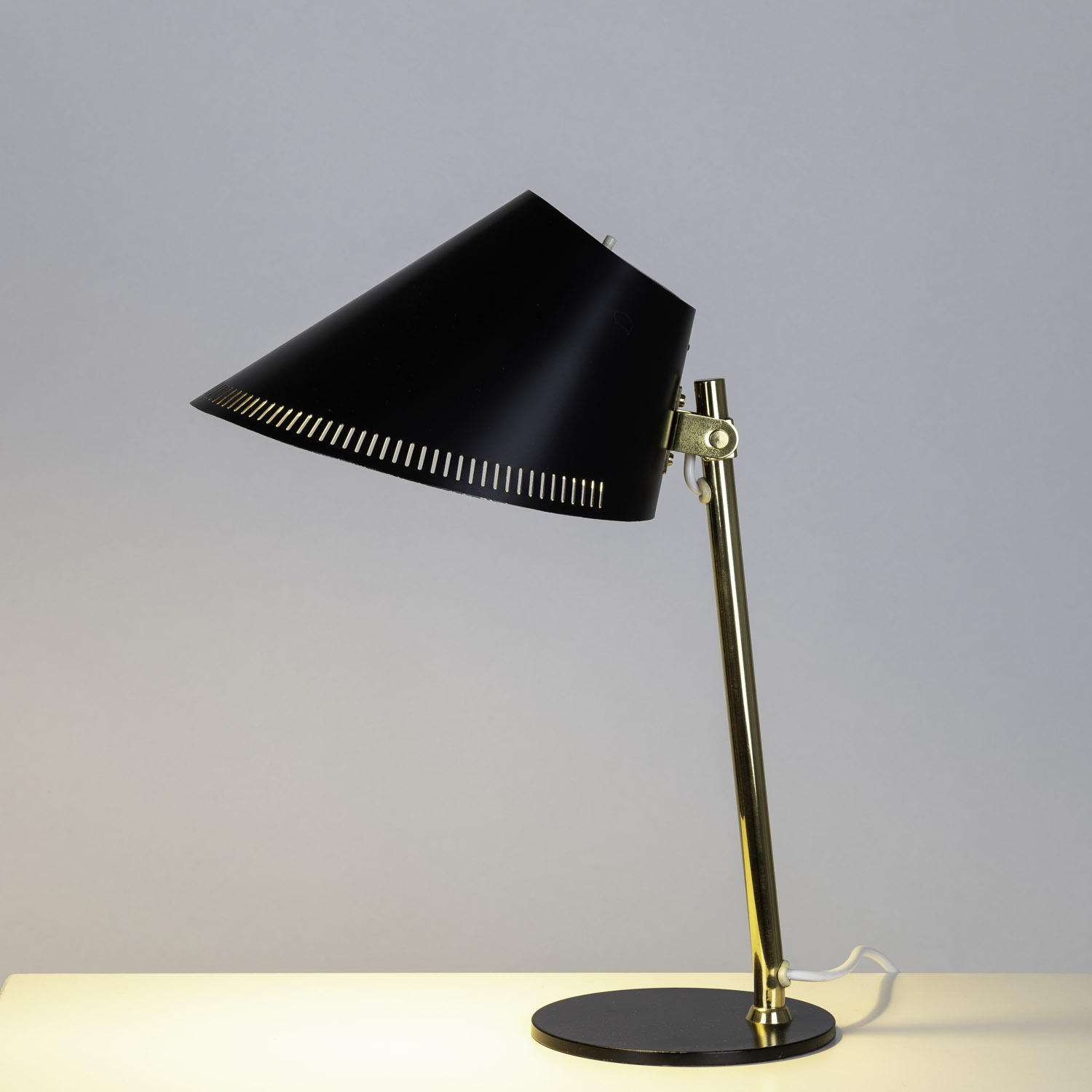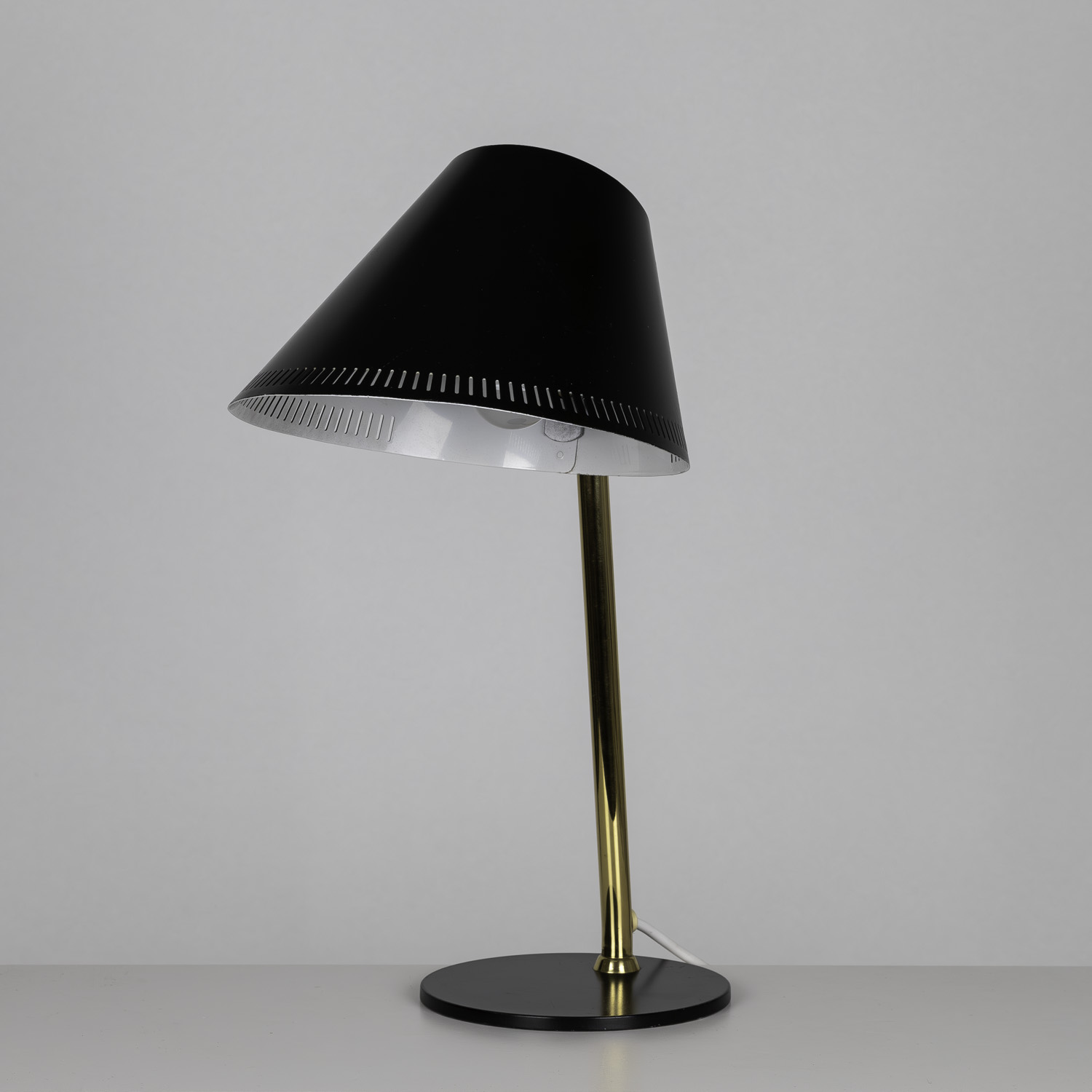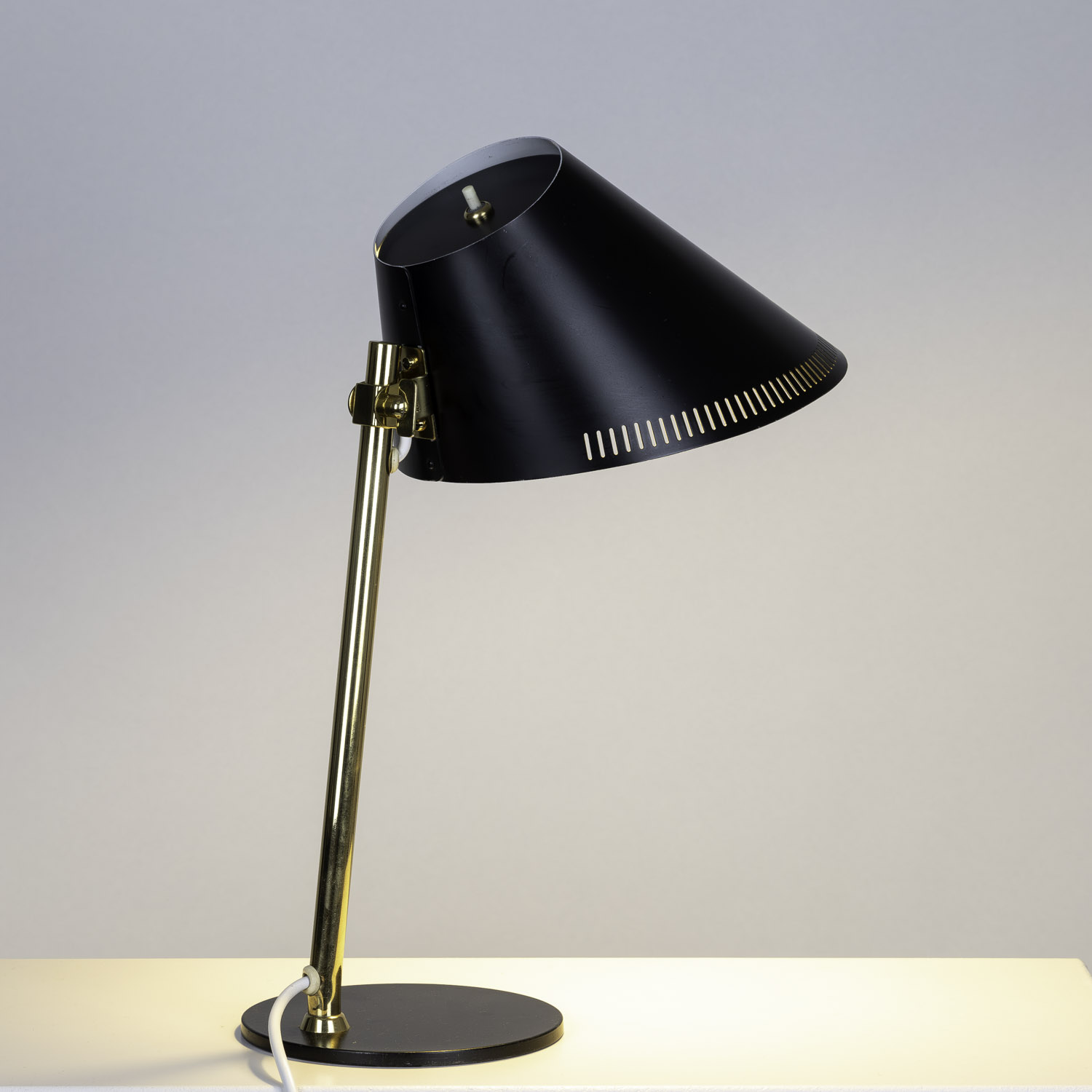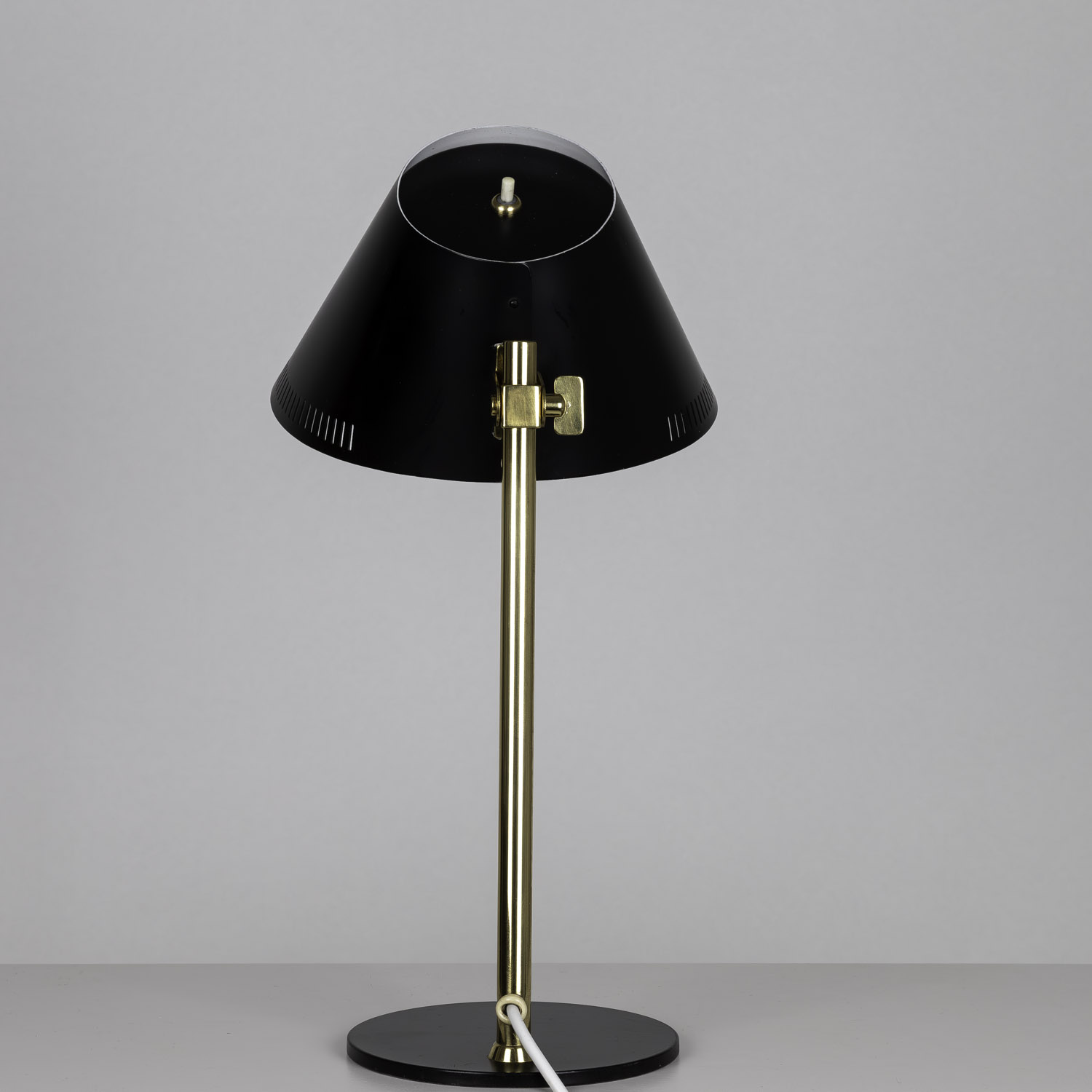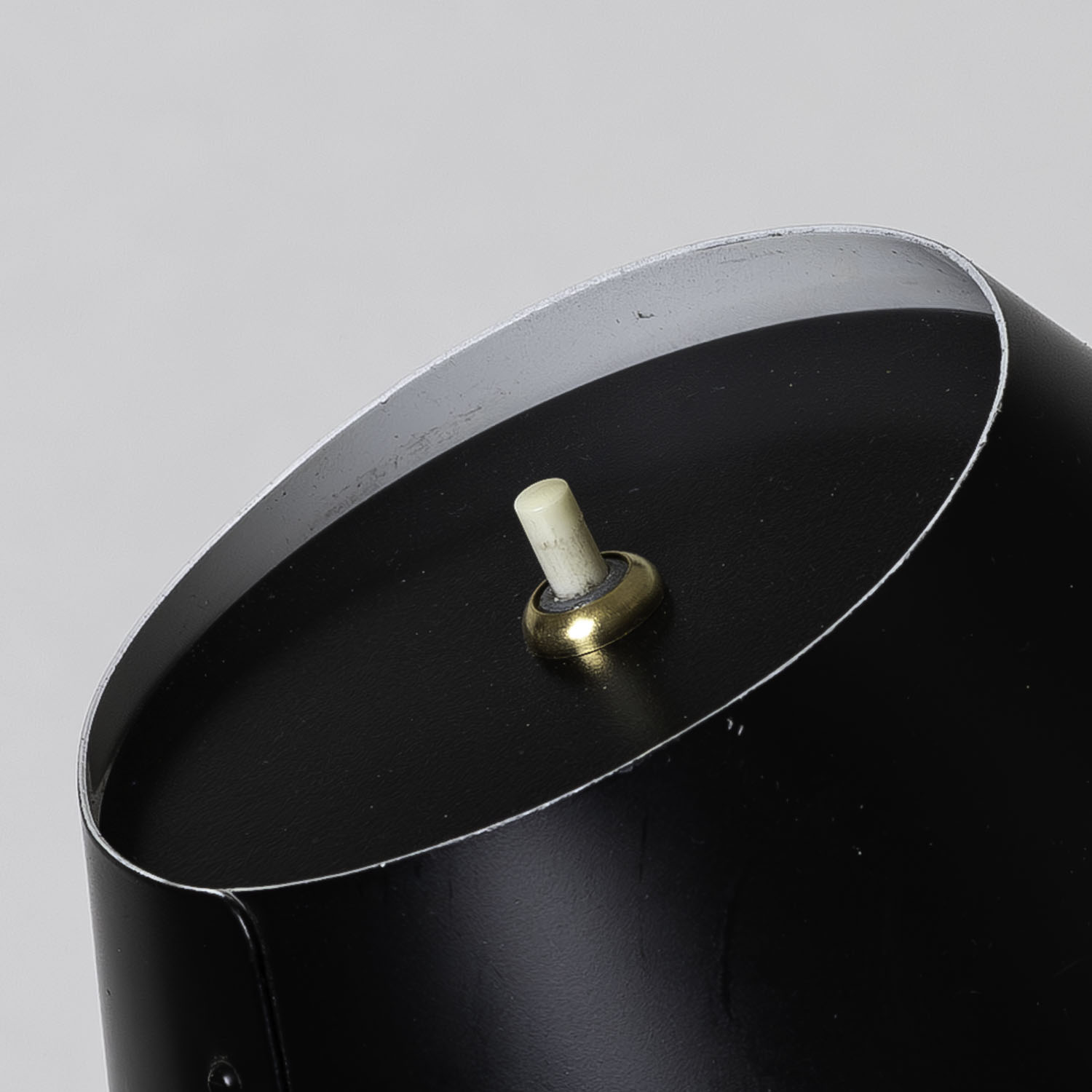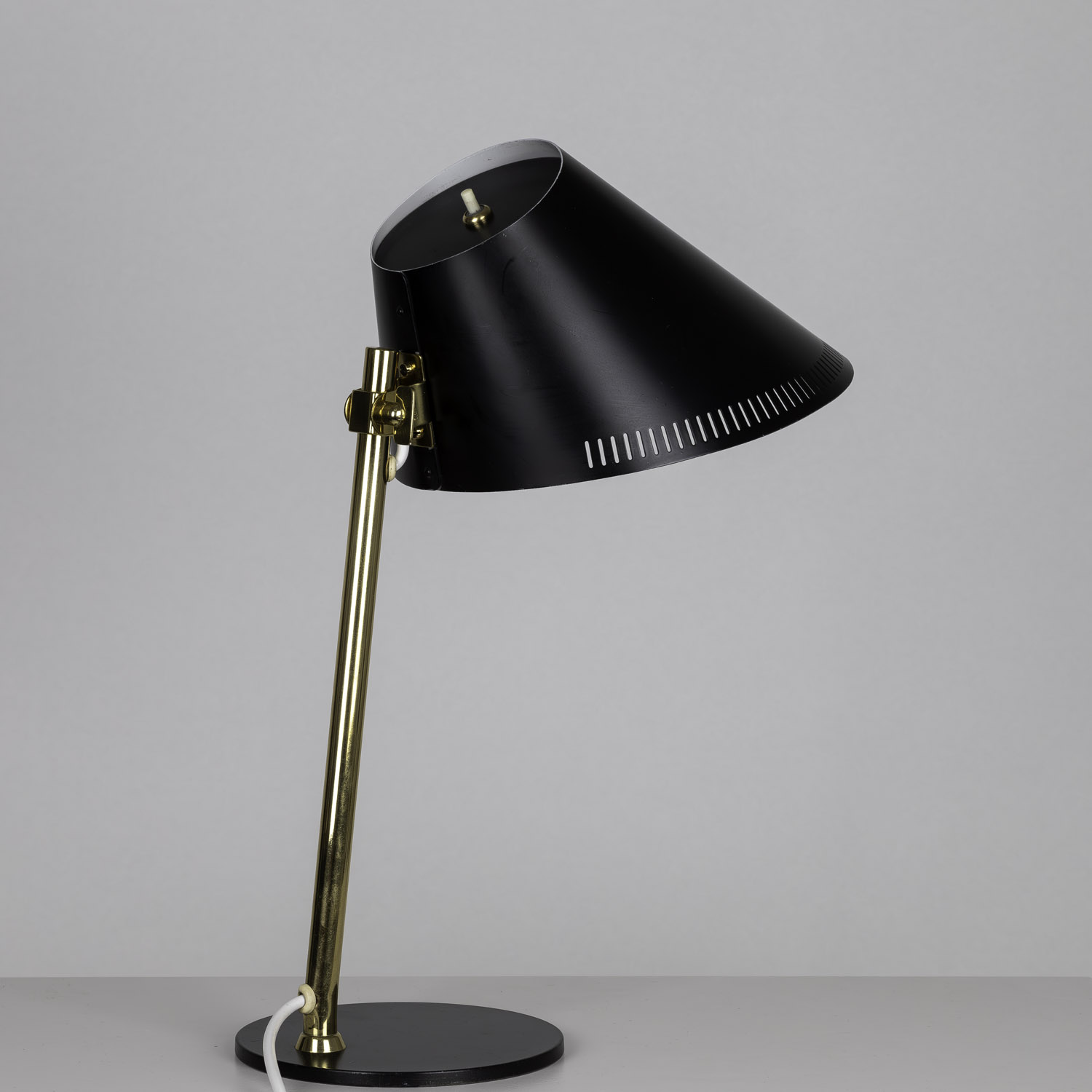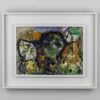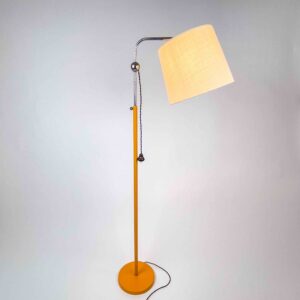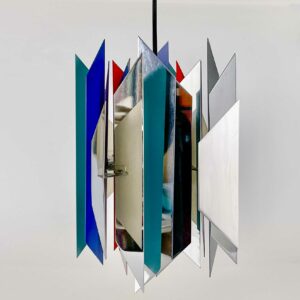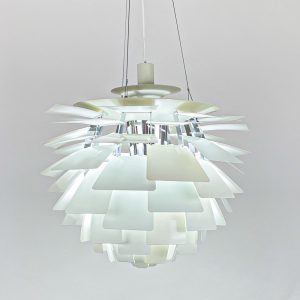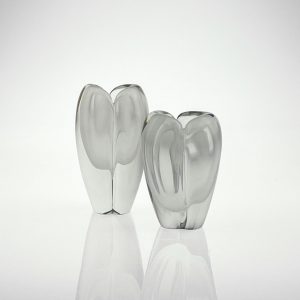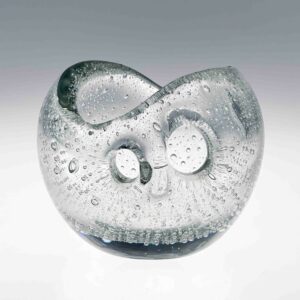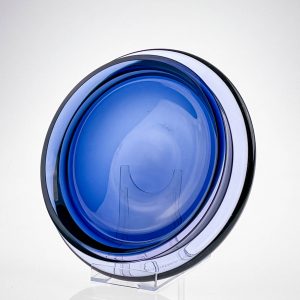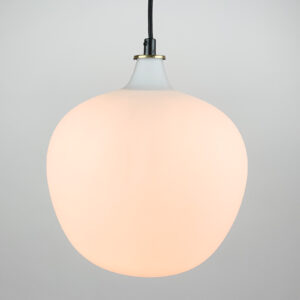| Marked | Stamped Idman Oy |
|---|---|
| Execution | Idman Oy, Helsinki ca 1955 |
| Condition | Very good condition. Complete restoration. Rewired. Wear consistent with age and use. |
| Literature | Ville Linna, Chasing Light: The Archival Photographs and Drawings of |
| Dimensions | Height 45 cm |
Paavo Tynell – Desk lamp, model 9227 – Idman, Finland ca 1955
€2,450.00
Availability: 1 in stock
A painted aluminium, brass and steel adjustable desk lamp with perforated shade, model 9227. Designed by the renowned Finnish lighting designer Paavo Tynell in the 1940’s and made by Idman Oy, Helsinki circa 1955.
The desk lamp has a round lacquered steel base. A brass rod is mounted on the base to which the lacquered perforated aluminium shade is connected. This connection is quite eleganty designed with a brass wing nut and is stamped “Idman Oy” in graceful lettering.
This desk lamp is in excellent condition, recently restored in it’s original condition.
About Paavo Tynell
Paavo Tynell (1890-1973) saw the light of day in Helsinki, twelve years after the introduction of the light bulb, at a time when Finland and most of northern Europe were still in the process of electrification. His birth marked the beginning of his journey to become a leading pioneer of modern lighting, in parallel with the spread of electric light around the world. By the year of his death in 1973, Tynell was entrenched as ’the man who enlightened Finland’.
In his early years, it seemed unlikely that Tynell would become one of the most influential designers of his time. He was the seventh of nine children in a working-class family that could not afford further education for him after primary school. At the age of 16 he began his apprenticeship at G.M. Sohlberg’s metal workshop, where he worked as a sheet metal worker for six years before becoming a blacksmith for another year. During these formative years, Tynell created his first lamp fixturemade of brass, which would later become his signature material.
In 1918, together with his former teacher Ehrström, Tynell founded metal smith Frans Nykänen, sculptor Emil Wickström and industrialist
Gösta Serlachius the company Taito Oy. As managing director, Tynell led the production of various lighting fixtures, functional metal objects, sculptures and custom-made designs from the foundry of the company.
During the 1920s, Tynell was the principal designer at Taito, assisted by other talented designers and artists such as Alvar Aalto, Henry Ericsson and Ville Vallgren. By the 1930s Taito concentrated exclusively on lighting and played a crucial role in the growing electrification of independent Finland.
Internationally, Tynell enjoyed fame, with notable projects such as the lighting of the Parliament building in Helsinki, designed by architect Johan Sigfrid Sirén, and collaborations with leading modernist architects, notably Alvar Aalto.
The 1930s and 1940s were a period of experimentation for Tynell. His design style evolved from functionalist and art deco designs to more decorative and elegant expressions. During this time, he served as president of Ornamo, the Finnish association of industrial designers, where he supported and trained young designers. His influence extended extended beyond Finland, especially in the United States, where he almost
became a celebrity.
After World War II, Tynell returned to brass as his signature material, creating unique lamps that combined traditional aesthetics with a modern look.
Brass quickly became the signature of Taito, which now had about 150 employees. From the 1930s to the 1950s, Tynell was considered as Finland’s leading lighting designer and he was frequently asked to illuminate public spaces across the country,
particularly in Helsinki, where his lighting is still an integral part of the city structure.
His influence also extended internationally, especially in the US, where he achieved great success as a designer achieved great success. Taito’s merger with the lighting factory Idman Oy in 1953 led to Tynell’s retirement as director, but he continued to design for Taito and other lighting brands in Finland and abroad. His collaboration with the respected brand Lightolier in the US continued until 1966. Tynell’s legacy continues to shine, not only in Finland, but worldwide, as an icon of innovation in the world of lighting design.


